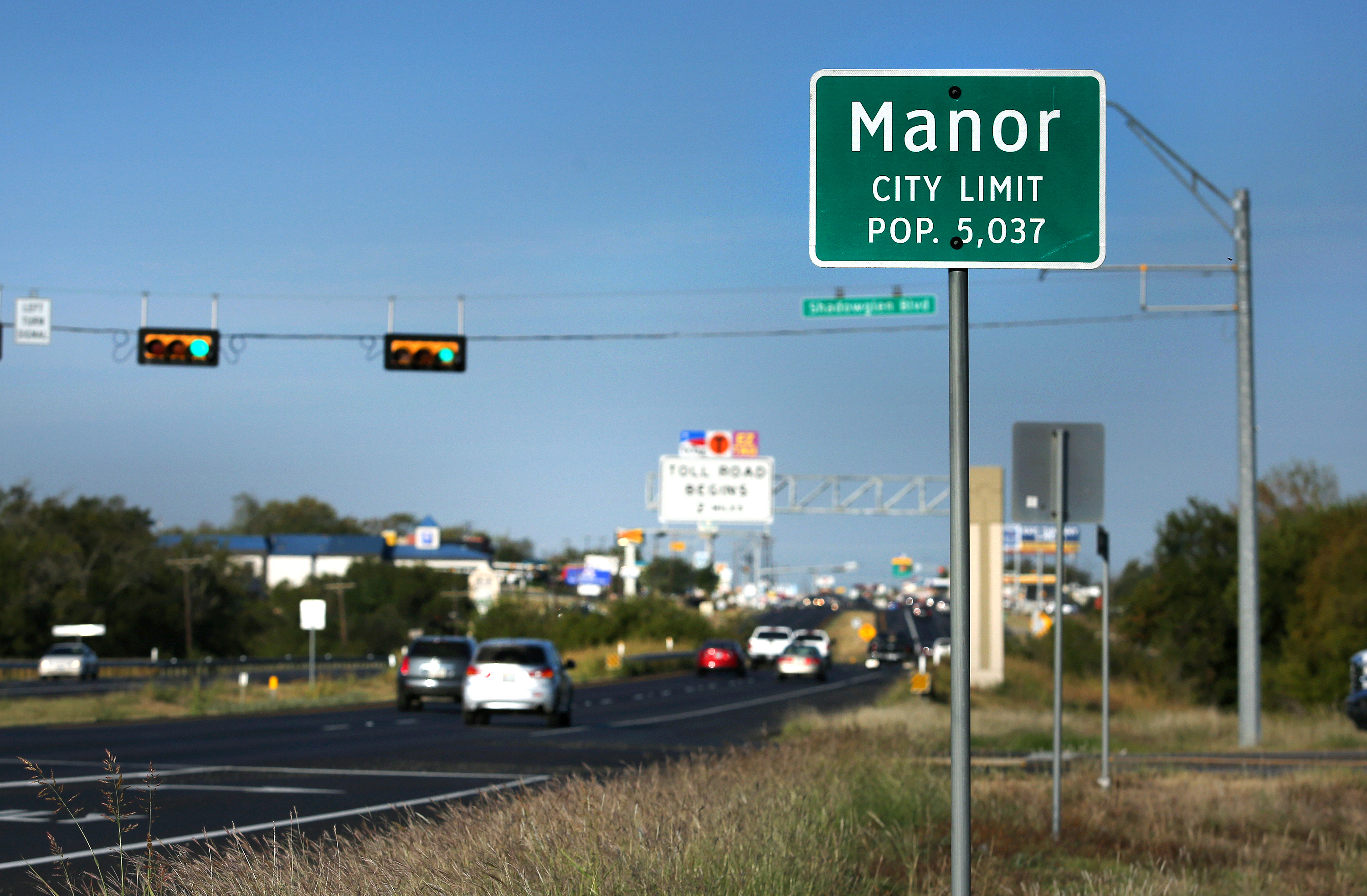In the past decade, the population of the city of Manor has grown more than 500 percent. Like other suburbs in Central Texas, many newcomers move there from Austin – pushed out by rising housing costs. It’s the other side of gentrification. But how does a town like Manor deal with that kind of explosive growth – and the accompanying demands on infrastructure? Can Manor afford to keep growing at the same rate?
What's Growing Manor, Texas?
Manor, Texas, is growing fast. Really fast.
But it hasn’t always been that way. The city, located 12 miles northeast of Austin, was settled by its namesake, James P. Manor, in the 1830s. When a donation of land by Manor allowed the railroad to come through town in the 1870s, people followed. Thus, Manor’s first big population boom occurred prior to its 1913 incorporation.
According to a survey prepared for the Travis County Historical Commission, “With the railroad, Manor promised to become the business hub for surrounding farmers sending their crops to market and buying supplies and new equipment. The influx of new citizens initiated an era of development heretofore unknown in the Manor community. Within a decade of the railroad’s arrival, Manor boasted a public school, three churches, six general stores, and 125 inhabitants.”
In 1921, the town of Manor officially became the city of Manor, at a time when its population was about 1,000 people and growing. However, in the next nine years, Manor fell victim to two fires, both of which completely destroyed its downtown. The 1920s also introduced drought, floods, boll weevil and the Great Depression.
By the 1930s, Manor’s population dropped to just over 650 residents.
It didn’t climb back to 1,000 residents again until 1988.
Enlarge

Screenshot from the film.
Though it has remained relatively sleepy as Austin has rushed ahead, Manor has had its moments. Notably, What’s Eating Gilbert Grape was filmed there. Manor was also the longtime home of the now-shuttered Manor Downs horse racetrack, which, in addition to hosting races until its closure in 2010, also hosted the Grateful Dead during the 1970s and ’80s when the band came to Austin. The city even has its own tech claim to fame – it was home to the first government agency in the country to use QR codes to disseminate information via signs placed throughout the town.
Enlarge

Jorge Sanhueza-Lyon
Against this backdrop, Manor’s biggest boom yet is now underway as overflow from Austin’s meteoric population boom has spilled into surrounding communities. In 2000, just 1,204 people called Manor home. In the following decade, the city’s population grew a staggering 318.4 percent, to reach a then all-time high of 5,037 in 2010.
Manor city staff estimates that the population has grown to 7,900 as of August 2015. By 2020, it forecasts that the population will reach 10,300 people.
If projections pan out, Manor will have seen an 8.5-fold population increase over 20 years, and that doesn’t even include the Shadowglen and Presidential Meadows subdivisions that lie just outside of city limits and are home to approximately 4,000 residents.
At a public meeting in April of this year, city of Austin demographer Ryan Robinson said it is likely the explosive growth occurring in Austin over the past several years, coupled with rising property values, that is fueling population spikes in developing areas east of the city as former residents seek more affordable costs of living. These trends could be a driving factor in Manor’s growth.
This series takes a look at that growth and the impact it has had on a community that wasn’t necessarily prepared for it.


Comments ( 3 )